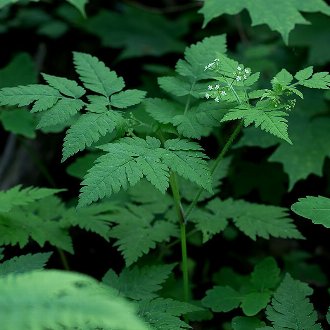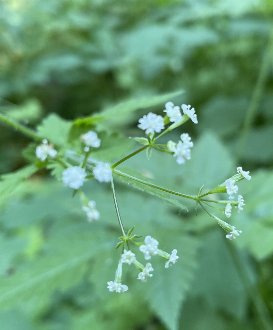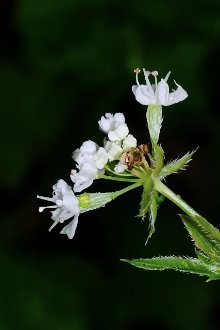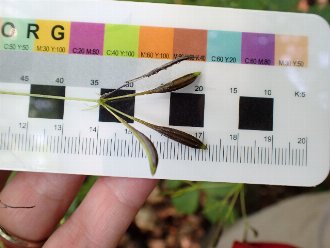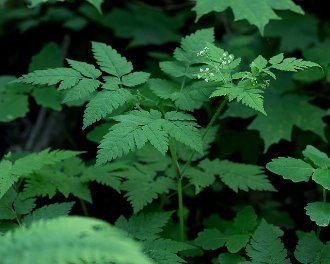Clayton's Sweetroot (Osmorhiza claytonii (Michx.) C.B. Clarke)
Also known as Clayton's sweetroot, sweet cicely, bland sweet-cicely.
↑Summary
A perennial native to rich, mesic woods in northeastern North America.
↑Range - Expand
| Legend | Color |
| Native | |
| Native or Not Present |
This tentative map is based on our own research. It may have limited data on Canada and/or Mexico, and there is some subjectivity in our assignment of plants as introduced vs. expanded. Read more in this blog post.
Although this plant occurs somewhere in each of these regions, it may only occur in a small part of some or all of them.
↑Similar Plants
↑Habitat
Clayton's sweetroot occurs in the understory of deciduous forests in northeastern North America, usually in mesic conditions, in deep, usually rich, loamy soil.
It is more common in Northern Hardwood forests and other more northerly forest types, and associates with trees such as sugar maple (Acer saccharum), American beech (Fagus grandifolia), northern red oak (Quercus rubra), eastern hemlock (Tsuga canadensis), and American basswood (Tilia americana), and in younger forests, quaking aspen (Populus tremuloides). Less commonly, it also associates with white ash (Fraxinus americana), black ash (Fraxinus nigra), or black ash (Fraxinus nigra).
It is most abundant at mid to higher elevations, especially in the south of its range, but it can occur at lower elevations as well.
Clayton's sweetroot requires deep, well-developed soil, preferring a loamy texture, but it tolerates some degree of adverse soil conditions, especially in the lower levels. It can be found on sandy-loam, clay-loam, and rocky or gravely loams. There is often an upper layer of decaying organic matter, 1-4 inches deep.
Little is known about this species' response to fire. It is probably more able to survive fires in late summer or early autumn, when the plant is mostly dormant and has not yet resprouted.
↑Notes
We recommend against the use of the common name "sweet cicely" to refer to this species or any species of the Osmorhiza genus, as that common name more frequently is used to refer to sweet cicely (Myrrhis odorata).
↑Links & External Resources
• Clayton's Sweetroot | Fire Effects Information System (FEIS) (About This Site)
• Osmorhiza claytonii (Clayton's sweetroot) | USDA PLANTS Database (About This Site)
• Osmorhiza claytonii | Go Botany (About This Site)
• Osmorhiza claytonii | Biota of North America Project (BONAP) (About This Site)
• Osmorhiza claytonii | NatureServe Explorer (About This Site)
• Osmorhiza claytonii | Missouri Plants (About This Site)
• Sweet Cicely | Maryland Biodiversity Project (About This Site)
• Osmorhiza claytonii (Sweet Cicely) | Minnesota Wildflowers (About This Site)
• Osmorhiza claytonii (Michx.) C.B. Clarke (Sweet Cicely) | Digital Atlas of the Virginia Flora (About This Site)



